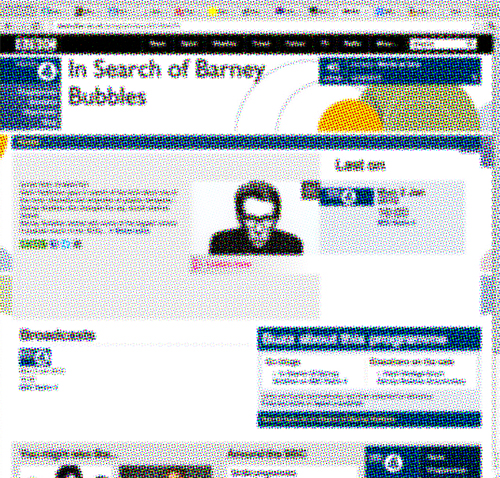The Medium is the Massage: An Inventory of Effects is a book co-created by media analyst Marshall McLuhan and graphic designer Quentin Fiore, and coördinated by Jerome Agel. It was published by Bantam books in 1967 and became a bestseller and a cult classic.
The book itself is 160 pages in length and composed in an experimental, collage style with text superimposed on visual elements and vice versa. Some pages are printed backwards and are meant to be read in a mirror (see mirror writing). Some are intentionally left blank. Most contain photographs and images both modern and historic, juxtaposed in startling ways.
The book was intended to make McLuhan’s philosophy of media, considered by some incomprehensible and esoteric, more accessible to a wider readership through the use of visual metaphor and sparse text. In its artistic approach it is considered cutting edge, even by today’s standards.
The book’s title is actually a mistake according to McLuhans’ son, Eric. The actual title was ‘The Medium is the Message’ but it came back from the printer with the first ‘e’ in message misprinted as an ‘a.’ McLuhan is said to have thought the mistake to be supportive of the point he was trying to make in the book and decided to leave it be. Later readings have interpreted the word in the title as a pun meaning alternately massage: ‘message,’ and ‘mass age.’ Its message, broadly speaking, is that historical changes in communications and craft media change human consciousness, and that modern electronics are bringing humanity full circle to an industrial analogue of tribal mentality, what he termed ‘the global village.’ By erasing borders and dissolving information boundaries, electronic telecommunications are fated to render traditional social structures like the Nation state and the University irrelevant. Prejudice and oppression are also doomed by the unstoppable pressure of instant, global communication.
While today it looks like a black and white copy of Wired magazine, and its prose reads more or less like boilerplate for any of the heady techno-utopian pronouncements of the 1990′s, it should be noted that it presaged the development of the original Arpanet by two years, and preceded the widespread civilian use of the Internet by almost twenty. For this and other reasons McLuhan is often given the moniker ‘prophet.’
There is also an LP based on this book (see below), put out by Columbia Records in the late 60′s and produced by John Simon, but otherwise keeping the same credits as the book.
